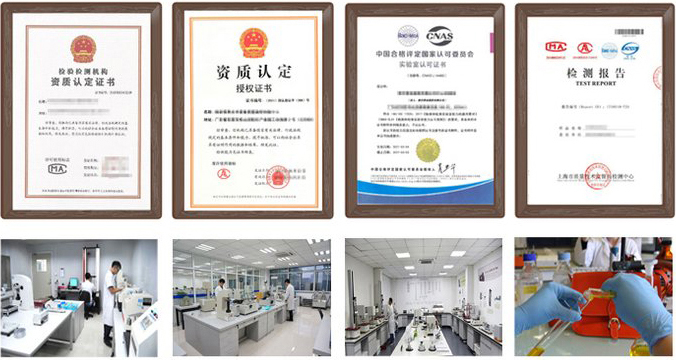

— Services —
 National free customer service telephone 400-101-7153
National free customer service telephone 400-101-7153 email:Service@Baijiantest.Com
phnoe:15601902607
telephnoe:400-101-7153
address:No. 700, Yishan Road, Xuhui District, Shanghai
Textiles & Clothing
Organizational structureWool is a slender solid cylinder that is curly in shape. The tissue structure of fibers is divided into three layers, namely the scale l...
To get tested, look for Baijian!
consultation hotline :400-101-7153
Mobile/WhatsApp:15601902607test details
Detection of down and feather sleeping bagsHow to apply for a report? What items need to be tested? We will conduct testing and evaluation in strict accordance with the standards. We can also provide personalized testing plans and reports according to your needs.
Organizational structure
Wool is a slender solid cylinder that is curly in shape. The tissue structure of fibers is divided into three layers, namely the scale layer, cortex layer, and medulla layer Scale layer: The scale layer is the surface layer of wool, which grows in a certain direction from the hair root to the hair tip. Each scale is connected to the cortical layer at one end of the hair root, and the other end is stretched outward, covering and connecting one by one. The coverage density of scales on wool varies greatly due to the variety of wool. The finer the wool, the more scales it has, the longer the overlapping parts it covers, and the more circular the scales are. The thicker the wool, the fewer the scales, and the shorter the overlapping length. The scales are mostly corrugated and fish like, overlapping and covering each other. Due to the outward extension and protrusion of the scale layer, increasing the frictional force between fibers can result in mutual restraint and felting effect, enhancing the adhesion force under humid and hot conditions. The scale layer can also give wool a good luster. The tough scale structure gives wool resistance to friction and pollution Cortical layer: The cortical layer is the main component of wool fibers, which is composed of many protein cells, and its constituent substances are called keratins or keratins. Cells adhere to each other and there are gaps between them. The cortical layer is the main part that determines the physical, mechanical, and chemical properties of wool fibers. It is divided into two types: the positive cortex layer and the secondary cortex layer. In curly wool fibers, they can be straightened and extended by about 20% under stress, and can be restored to their original curly state after relaxation. The cells on the outer side of the curl wave are called positive cortical cells, while the cells on the inner side are called paracortical cells. The positive cortex has lower sulfur content than the secondary cortex, making it more chemically active and easy to stain. The opposite is true for the subcortical layer. In fine wool of excellent varieties, two types of cortical layer cells aggregate on both sides of the hair stem and intertwine along the fiber axis, known as bilateral isomerism
Medulla layer: The medulla layer is an opaque loose substance located in the center of wool fibers. Generally, fine wool has no medullary layer, while thicker wool has varying degrees of medullary layer. The more medulla, the flatter and rougher the appearance of wool, and the poorer its quality. Wool containing a large amount of medullary layer, which is brittle, less curly, and dry, is called dead hair. Some wool has discontinuous pith, with both fine and coarse hairs on one fiber. This type of wool is called two types of wool Wool types have different classification methods and names
Wool
① According to histological structure: hair fibers can be divided into two types: pitted hair and unmyelinated hair. Medullated hair is composed of three layers of cells: scales, cortex, and medulla; Without medullary hair or medulla. The scale layer has a protective effect, and its shape and arrangement can affect the moisture absorption, felting, and reflective light ability of wool. The cortical layer is connected below the scale layer and is related to the strength, elongation, and elasticity of hair fibers. The finer the wool, the greater its proportion. The medullary layer is the main feature of medullary hair, located in the center of the hair and composed of loosely structured, air filled polygonal cells; It is easy to distinguish the degree of development by observing the transverse section under a microscope. The more the medullary layer develops, the thicker the fiber diameter and the lower the process value ② According to the growth characteristics, tissue structure, and technological characteristics of hair fibers, it can be divided into down, hair, two types of hair, prickly hair, and dog hair. Among them, prickly hair is short hair that grows on the face and lower limbs, and has no technological value; Dog hair is the thicker hair formed by the primary hair follicles in the early embryonic development of fine haired lambs, which is gradually replaced by unmyelinated hair during lactation. Therefore, there are only three basic types of wool that can be used as raw materials for woolen spinning: down, hair, and two types of wool. The down is distributed at the bottom of the coarse wool blanket. The fine wool blanket is entirely composed of fluff, with fine and uniform fibers, an average diameter of no more than 25 microns, and a length of 5-10 centimeters. It is soft and flexible, with good elasticity and soft luster. Hair, also known as coarse hair, is divided into three types: normal hair, dry hair, and dead hair, forming the outer layer of coarse wool blanket. The normal hair fineness is 40-120 microns, with less bending and a lack of softness. The medullary layer of fine hair is less developed, the cortical layer is relatively thick, the fiber elasticity is large, and the process value is high. The tissue structure of dry hair is the same as that of normal hair, but the tip is dry and lacks luster. The medullary layer of dead hair is particularly developed, with thick and hard hair that is fragile and easily broken. Two types of hair, also known as intermediate type hair, have a fineness and other technological value that lies between the fuzz and hair
Shearing wool
③ According to the fiber composition of the wool cover, it can be divided into identical wool and mixed wool. The former includes fine wool, semi fine wool, and advanced improved wool, with similar fiber fineness, length, and other appearance characteristics; The latter includes coarse wool and lower generation improved wool. The wool strand is composed of a mixture of down, two types of wool, and hair. The fiber thickness is not consistent, and the textile value is low. It is mainly used as a raw material for blankets, carpets, and felt products The variety structure of wool in the world is generally 31.3% fine wool, 42.3% semi fine wool and hybrid wool, and 26.4% carpet wool. The original sheep breeds in China belong to Mongolian sheep, Tibetan sheep, and Kazakh sheep. The wool produced is of coarse quality and belongs to mixed wool, mainly used for carpet wool. Mongolian wool includes both cold wool with a fineness of 52-58 counts and coarse wool. Tibetan wool is longer, with more two types of wool in the wool strand, good fiber elasticity, and luster, making it a better quality type of mixed wool; Xining wool produced in Qinghai is a good raw material for bed blankets and carpets. Kazakh wool is often mixed with colored hair such as yellow and brown, with more dry and dead hair in the strands. After the 1950s, on the basis of introducing fine wool sheep and semi fine wool sheep from abroad, China successively developed varieties such as Xinjiang fine wool sheep and Northeast fine wool sheep, which improved the quality of wool
1. Project bidding: Issue authoritative third-party CMA/CNAS qualification report
2. Online e-commerce platform entry: Quality inspection report recognized by major e-commerce platforms 3. Used as a sales report: issuing legally effective testing reports to make consumers more confident 4. Papers and research: Provide professional personalized testing needs 5. Judicial services: providing scientific, fair, and accurate testing data 6. Industrial problem diagnosis: Verify the troubleshooting and correction of industrial production problems1. Telephone communication and confirmation of requirements
2. Recommend solutions and confirm quotations 3. Mail samples and arrange testing 4. Progress tracking and result feedback 5. Provide reports and after-sales service 6. If urgent or priority processing is required1. The testing industry is fully covered, meeting different testing needs
2. Fully cover the laboratory and allocate localized testing nearby3. Engineers provide one-on-one services to make testing more accurate
4. Free initial testing, with no testing fees charged
5. Self service order delivery for free on-site sampling
6. Short cycle, low cost, and attentive service 7. Possess authoritative qualifications such as CMA, CNAS, CAL, etc 8. The testing report is authoritative and effective, and is generally used in China1、Project bidding: issue authoritative third-party CMA/CNAS qualification report;
2、E-commerce platform entry: quality inspection reports recognized by major e-commerce platforms;
3、Used as sales report: issuing a test report with legal effect to make consumers feel more at ease;
4、Papers and scientific research: providing professional and personalized testing needs;
5、Judicial services: providing scientific, fair and accurate testing data;
6、Industrial problem diagnosis: verifying the troubleshooting and correction of problems in industrial production;
Testing process

Detection advantages

Related Recommendations

Screenshot, WeChat scan QR code
WeChat ID: 15601902607
(Click on WeChat ID, copy and add friends)